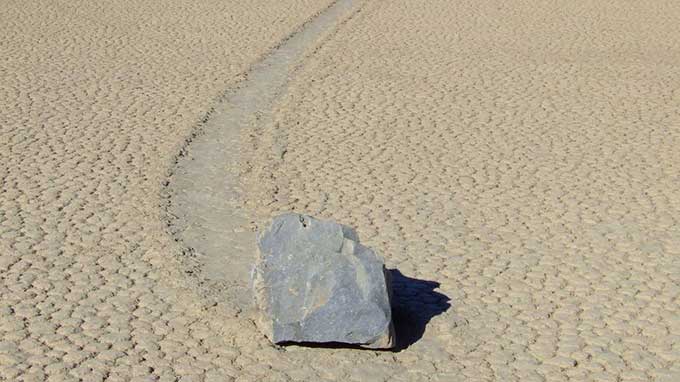For decades, people have wondered about the mysterious "sailing stones" of Death Valley, California. Though no one had seen them actually move, it was clear that they had, because they left behind furrows in the dry, cracked mud. It was hypothesized that the rocks were pushed by the wind, or that ice on the rocks made them float across the playa.
But in 2014 Richard Norris, an oceanographer at University of California San Diego, figured it out. He attached GPS units to some rocks, and then waited. It took two years, but he finally conclusively solved the mystery.
From Motherboard:
To figure it all out, Norris and his cousin attached specially-designed GPS units to the back of rocks they had brought into Death Valley (the National Parks Service wouldn't let them mess with the rocks that were already there). They also installed a weather station, and then...they waited.It took two years, but finally, the rocks moved. Norris and his cousin, completely by chance, actually got to witness them in action. The researchers discussed their findings in a paper published in PLOS One. They found that when enough rain fell on the playa to pool, and the temperature dropped, the water would freeze into huge, thin sheets of ice around the rocks — which tumble onto the playa from a nearby hillside. As the morning sun began to melt the ice, if a gentle breeze blew, it could move the ice, which dragged the rocks along with it."The ice is like the thickness of a window pane," Norris told me. "And although it's very thin, it's a huge, huge sheet of ice. It's sort of being moved sort of inextricably by these breezes and it can shove around really big things — and a lot of rock."
Motherboard interviewed Norris for its new podcast, Science Solved it.

Hi this is good and informative article thank you. We also wrote similar articles related to beauty tips on our blog https://glowpink.com/
ReplyDelete